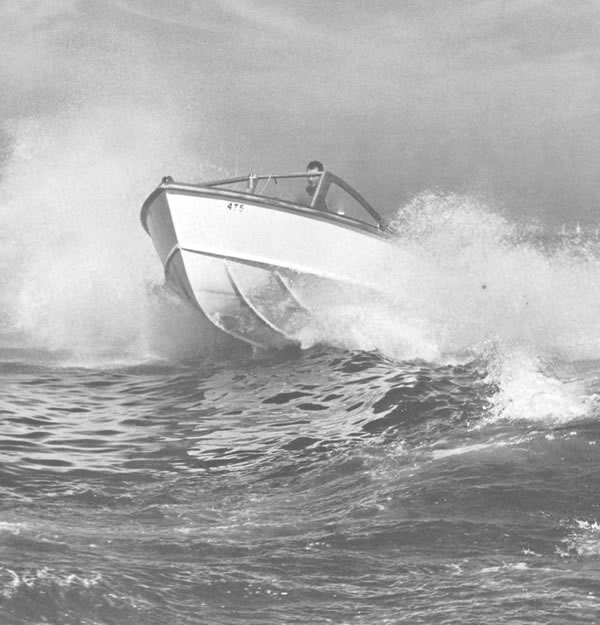Deep-V Questions & Answers
Do Hunt hulls have "constant deadrise?"
No. In a Hunt deep-V, the angle of deadrise, which is the angle of the bottom from horizontal, going from keel to chine, is not the same at each point from bow to stern, but varies continuously. The changes are subtle, part of the "secret" in making Hunt deep-V's superior).
Often, writers for magazines will refer to our hulls as "constant deadrise" V's, adding to the confusion. There are, of course, builders who attempt to imitate our hull designs but then, perhaps to make building simpler and cheaper, make their bottoms unvarying (i.e. constant) in deadrise; these boats will not perform as well.
Is there one optimum angle of deadrise?
Yes and no. Ray Hunt's original 24-degree angle has been proven in raceboats to provide the best performance in ocean racing. For boats whose speeds will be more moderate, particularly in the 20-35 knot range that is sensible for fast cruising and touring, we have had success with lower angles. Many of the yachts we design today have deadrise as little as 18 degrees.
Shallower angles are more prone to pounding at extremely high speeds but are more appropriate as speed and boat weight are reduced. The deadrise angle, within this narrow range, is determined by the intended purpose of the boat and the many aspects attached to its size, weight, power, etc.
Are Hunt deep-V hulls unstable at low speed?
No. Today's Hunt-designed hulls carry their chines lower than the original hullform, so that the chines are now immersed at less than planing speed. When the chines were above water, the beam at the waterline was narrower as the vee of the hull cut in. Immersing the chine makes the waterplane wider and the boat more stable. This does not adversely affect performance because, at the boat begins to plane, it rises slightly and the chine is less immersed. That is part of the process in planing boats of reducing surface area, one of the components in drag.





There are, obviously, many other individual Hunt designs which merit listing. No other designer or naval architectural firm can point to as many "breakthrough" powerboats. And this is made even more remarkable by the fact that Ray Hunt also designed sailboats which won world-class events as well as one-designs that still enjoy class racing thirty years after his death. He is the only designer to have "won" world championships in both sail and power.
Does the Hunt deep-V work in commercial boats?
Yes, it certainly does. C. Raymond Hunt Associates is as famous today for its pilot boats as for its yacht designs. An offshore lobsterboat, designed in the 1960's, not only opened up offshore waters for this type of fishing but also was the first to demonstrate the advantages of an open-transom arrangement.
The Hunt deep-V is used today in fireboats, passenger ferries, supply and service vessels, port patrol and law enforcement in lengths from 20' to 85'.
